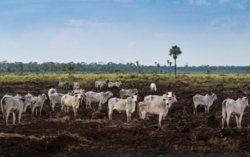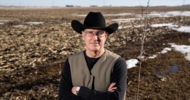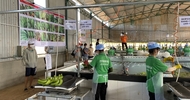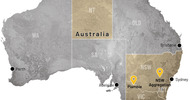Just Food | 8 November 2023
Almost 80mha additional cropland needed to sustain global food demand, says McKinsey
by Fiona Holland
An extra 70 to 80 million hectares of cropland is required in the next seven years to meet the growing demand for food and feed worldwide, according to research from McKinsey.
Such a quantity is equivalent to Brazil’s total cropland, or three times that of Tanzania’s.
This amount will also be needed to meet the global demand for “fuel and natural capital”, McKinsey said.
However, accounting for the potential impact of changing climate conditions and geopolitical events on trade could boost the quantity required to over 110mha, it added.
In seven years’ time, McKinsey predicts 70% of this cropland will be used for manufacturing feed for livestock production, while 20% will go towards growing crops for human consumption.
The report also highlights that “hotspots of competition” for cropland for feedstocks in Latin America and Sub-Saharan Africa could turn into “the source of most additional cropland”, resulting in higher land and food prices in these regions.
McKinsey predicts public and private stakeholders will need to invest around $300bn to turn the necessary amount of pastureland into cropland by 2030.
In a statement, Amandla Ooko-Ombaka, partner at McKinsey, stressed deforestation was no longer viable as a default method for producing new cropland. She added: “We need to change how we use land to meet our commitments to climate and nature and feed a growing global population.”
If the world is to meet or offset the future demand for additional land, McKinsey said that investment in “conversion of degraded land, stronger yield growth and efficiencies from increased trade” will help but will not be enough.
It added that actions including “behaviour change, reducing food waste and seeking alternative offshore resources” will also “likely” be necessary to encourage sustainable land use.
The global management consultancy proposed a number of “actions” for key stakeholders in food and agriculture to help offset more than half the land demand by 2030. These include double cropping (harvesting two crops on the same piece of land in a year) and introducing carbon credits for practices like reforestation and transforming farmland back to forest.
Nelson Ferreira, senior partner at McKinsey, said: “Input providers need to know that land prices will increase by the end of the decade. Farmers’ margins will decrease, and input providers need to understand what it means for farmers. Funds investing in land need to know that some of the hotspots for food, fuel, biodiversity are the same.
“There could be a race for prime spots of land – so they have to decide where to go now. Similarly, governments can help create the right incentives and investment in public infrastructure to support a sustainable land use transition, for example irrigation to support restoration of degraded land.”














